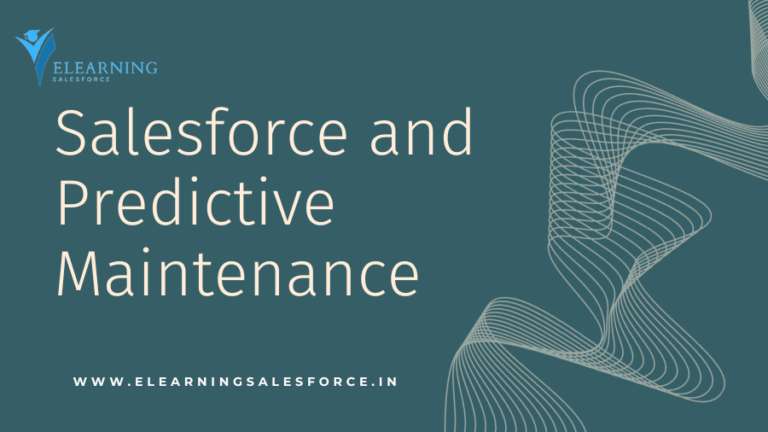Introduction: Data Architecture and Management
Data Architecture and Management: In the realm of Salesforce, effective data architecture and management are crucial for organizations to derive meaningful insights, enhance user experiences, and drive business success. This blog serves as a comprehensive guide to understanding Salesforce data architecture, best practices for data management, and strategies to optimize your data for maximum efficiency.
Salesforce Data Architecture Overview:
- Objects and Fields:
- Salesforce data is organized into objects, which represent database tables. Fields, in turn, define the attributes or columns within those tables. Understanding the relationships between objects and fields is fundamental to designing a robust data architecture.
- Record Types and Page Layouts:
- Record types allow you to define different sets of picklist values, page layouts, and business processes for different users. Leveraging record types enables a more tailored user experience and data structure.
- Relationships:
- Salesforce supports various types of relationships between objects, such as master-detail and lookup relationships. Effective use of relationships ensures data integrity and consistency across different parts of your Salesforce environment.
- Data Model Optimization:
- Designing an efficient data model involves careful consideration of the relationships between objects, the use of indexing, and the proper selection of field types. A well-optimized data model enhances performance and simplifies data retrieval.
Best Practices for Salesforce Data Management:
1. Data Quality and Governance:
- Validation Rules:
- Implement validation rules to enforce data quality standards and prevent the entry of inaccurate or incomplete information.
- Data Governance Policies:
- Establish data governance policies to ensure consistency, accuracy, and compliance with regulatory requirements.
2. Import and Export Strategies:
- Data Loader:
- Utilize tools like Salesforce Data Loader for efficient data import and export operations.
- Data Import Best Practices:
- Follow best practices for data imports, including proper data cleansing, validation, and backup procedures.
3. Data Security:
- Role-Based Security:
- Leverage role-based security to control access to data based on users’ roles within the organization.
- Field-Level Security:
- Implement field-level security to restrict access to specific fields within an object.
4. Data Backup and Recovery:
- Regular Backups:
- Establish regular data backup schedules to prevent data loss due to accidental deletions or system failures.
- Data Archiving:
- Implement data archiving strategies to store historical data and keep active data sets manageable.
5. Data Storage Optimization:
- Use of External Objects:
- Consider using external objects to access data stored outside Salesforce without consuming additional storage space.
- Data Storage Monitoring:
- Monitor data storage usage regularly and optimize by archiving or deleting unnecessary data.
6. Integration Best Practices:
- Real-Time Integration:
- Opt for real-time integration where needed to ensure that data remains synchronized across different systems.
- Data Transformation:
- Implement data transformation processes to harmonize data formats and structures during integration.
7. Duplicate Management:
- Duplicate Rules:
- Set up duplicate rules to identify and prevent the creation of duplicate records.
- Matching Rules:
- Configure matching rules to define the criteria for identifying duplicate records.
Strategies for Optimizing Salesforce Data:
1. Indexing:
- Selective Indexing:
- Utilize selective indexing on frequently queried fields to enhance query performance.
2. Bulk API Usage:
- Bulk API for Large Data Sets:
- When working with large data sets, leverage Bulk API for faster data processing and reduced impact on system resources.
3. Streaming API:
- Real-Time Data Push:
- Explore Streaming API to enable real-time data push and updates, reducing the need for manual data refresh.
4. Consideration of Data Volume:
- Data Volume Impact:
- Understand the impact of data volume on performance and consider strategies such as data archiving to manage large datasets.
5. Platform Events:
- Event-Driven Architecture:
- Implement platform events for event-driven architecture, allowing different parts of the system to react to data changes in real-time.
6. Field History Tracking:
- Audit Trail:
- Enable field history tracking to maintain an audit trail of changes to selected fields, providing visibility into data modifications.
Conclusion:
Salesforce data architecture and management play pivotal roles in the success of organizations leveraging the Salesforce platform. By adopting best practices, optimizing data structures, and implementing robust data management strategies, businesses can unlock the full potential of their Salesforce environment. As the volume and complexity of data continue to grow, a proactive and strategic approach to Salesforce data architecture becomes increasingly essential. Embrace the guidelines outlined in this guide to elevate your data management practices and ensure that your Salesforce platform serves as a reliable and powerful foundation for your business operations.


